Patek Philippe proves time and time again why they stand at the apex of fine watchmaking, by conducting a masterclass on how to surprise and delight their fans the world over with two unexpected, and very fine releases, midway through Watches and Wonders 2021.

We thought it would just be a Nautilus party this week for Patek Philippe with the olive green dial iterations of the 5711 and the beautiful 5990 travel time chronograph in rose gold, but barely has the furore around those watches settled down, when a surprise announcement via video conference was just released today to take the spotlight back.

The two watches in question are an updated Calatrava with the famous “Clous de Paris” bezel with a new manually wound movement (Ref 6119) and a brand new Perpetual Calendar (ref 5236P) with a patented in-line display, which are both satisfying in their own way.
Calatrava Ref 6119
It’s true in recent times that the Calatrava has not been at the top of mind of watch collectors when it comes to the genre of the simple dress watch, and this is mostly because of the stiff competition from rival brands in the same category.
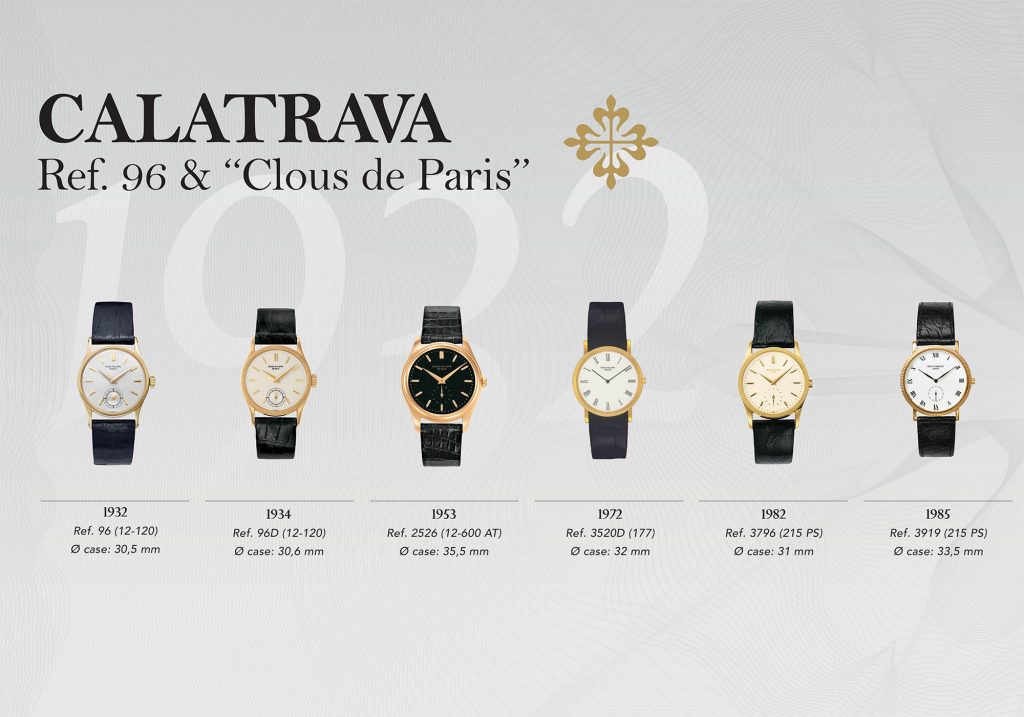
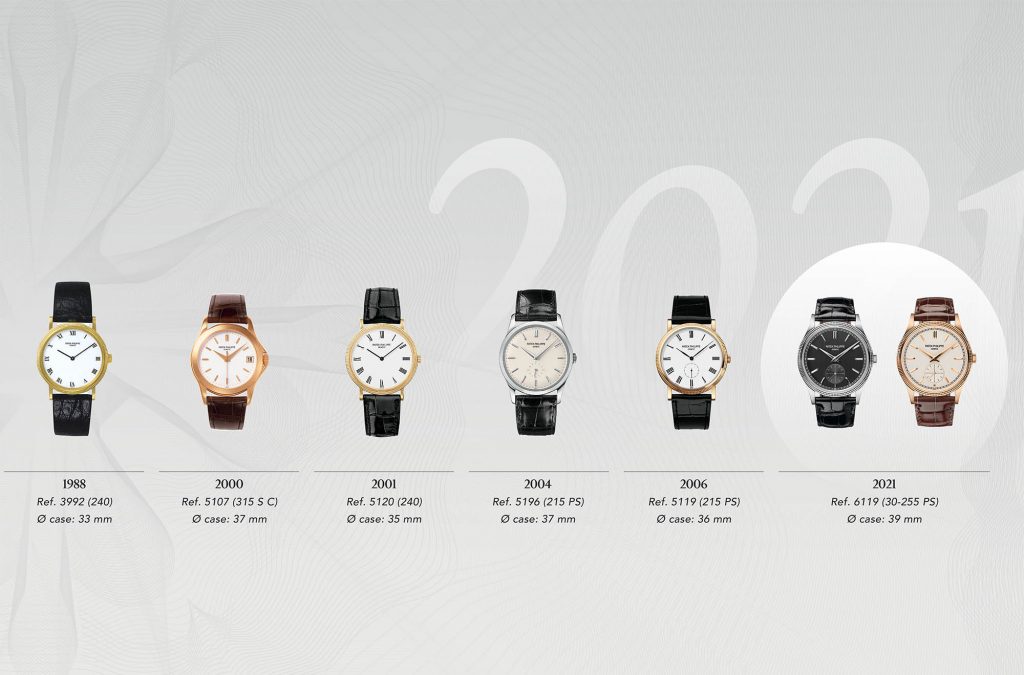
It doesn’t take much though for collectors to return to the Calatrava eventually however, given that it was essentially Patek Philippe who invented the genre in 1932, in an era when pocket watches were more common than wrist watches. The idea for the Calatrava was for it to be a slim dress watch that could increase the mainstream appeal of Patek Philippe and be a counterpoint to the complicated models beloved of high-end collectors.
The first Calatrava then was the iconic Reference 96, which would go on to become the quintessential elegant dress watch. The watch might have been simple on the surface, with only hours, minutes and seconds, yet below the surface when one looked closely, one could see all the essential values of the brand represented, in its peerless finishing and the highest quality of manufacture.
This watch and its descendants would go on to become treasured heirlooms, worn with pride daily or for special occasions.
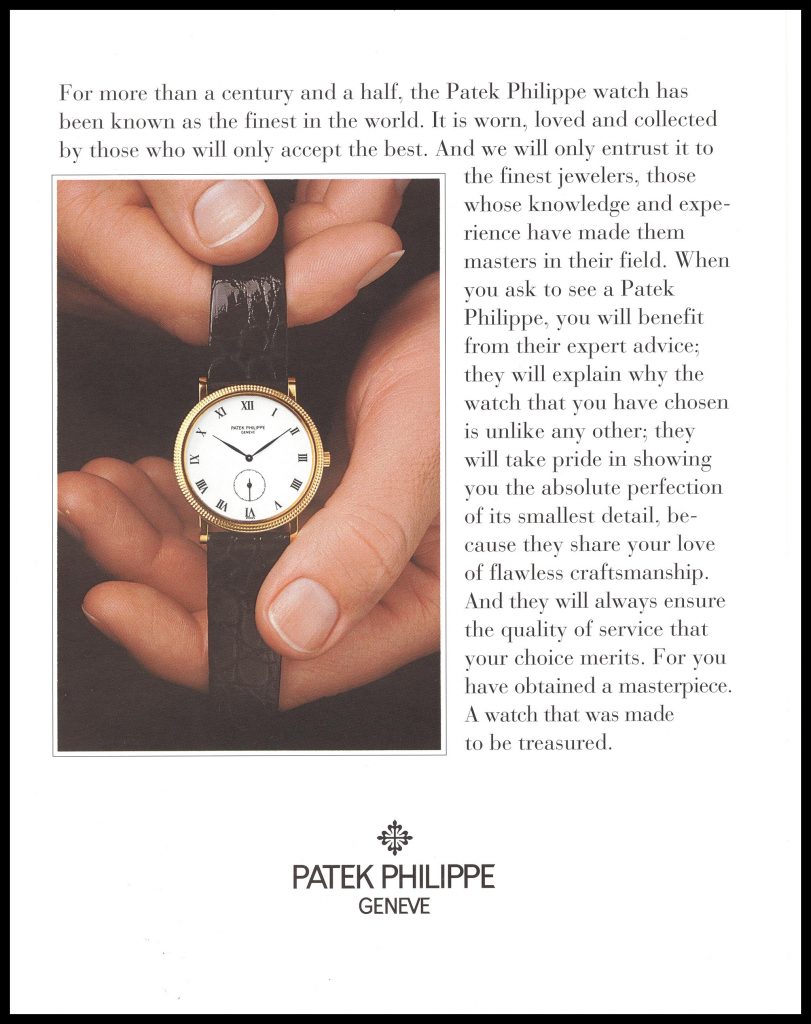
Out of the Calatrava line of watches that descended from the first Reference 96 was a particularly memorable one from 1985, the Reference 3919. Aside from the pocket watch layout with small seconds at 6 o’clock courtesy the calibre 215 PS, and the printed black Roman numerals contrasted against the stark white lacquered dial with a porcelain-like finish, it was the signature “Clous de Paris” hobnail guilloché on the bezel that was the show stopping feature.
Produced for over 20 years, this was a watch that was well respected and loved by Patek Philippe fans, but it had fallen out of favour in modern times due to the diminutive size of the watch at 33.5mm.
This is where the new Calatrava Ref 6119 comes in.
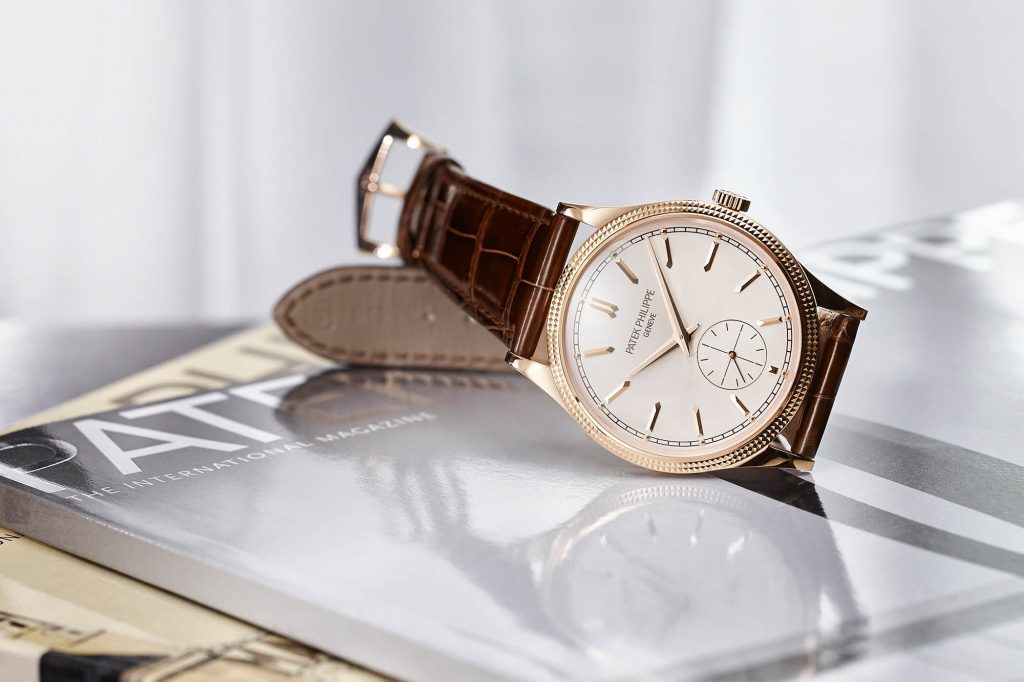
Enlarged to a modern 39mm, the watch features the same signature “Clous de Paris” hobnail guilloché on the bezel, although with a wider chamfered profile in the newer watch. Also, instead of printed Roman numerals on the dial, the new Ref 6119 now comes with applied and faceted “obus” hour markers in gold.
The most interesting thing about this watch however is the movement that it comes with, the manual winding Calibre 30-255PS, offering a useful 65 hours of power reserve and hacking seconds. Furthermore, it was conceived with a particularly unique mandate given by Thierry Stern, President of Patek Philippe, to his development team.
Even though the movement could be much bigger than the Calibre 215 PS from the Ref 3919 in order to fit a larger barrel, it had to retain the same thickness of 2.5mm in order to keep the same slender propositions in the wrist. The challenge therefore, in the new movement, was that not only would the parts be bigger, they had to be proportionally thinner – a big ask given the 21.65mm diameter of the older Calibre 215PS, versus the 30.4mm of the new Calibre 30-255PS.
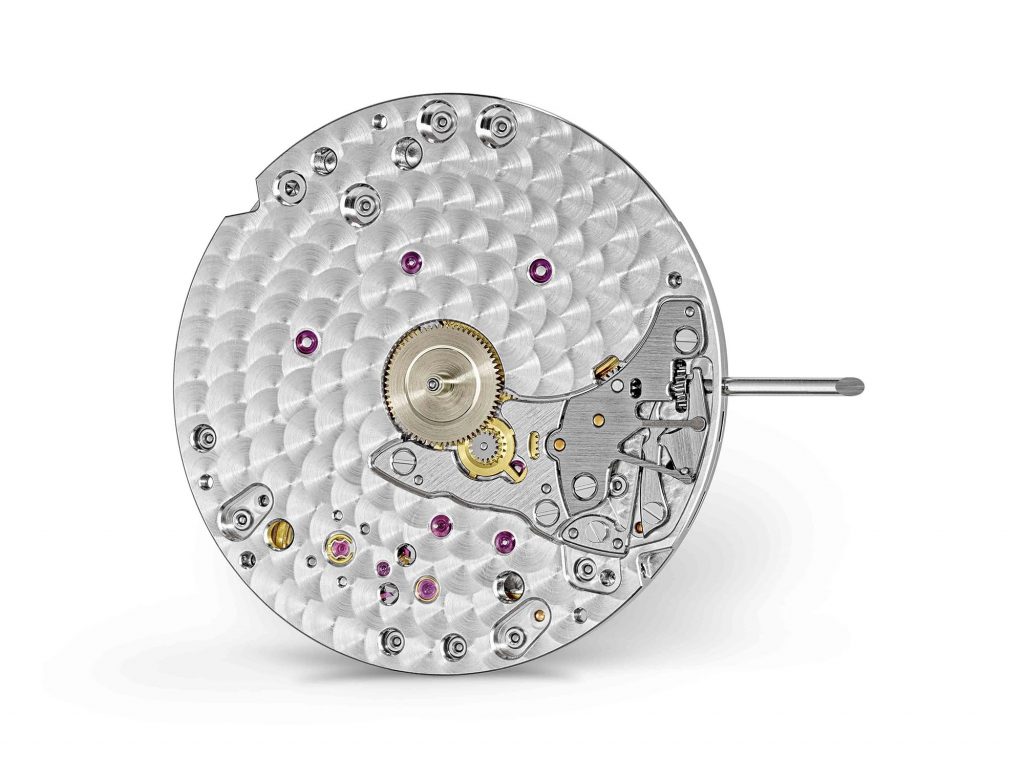
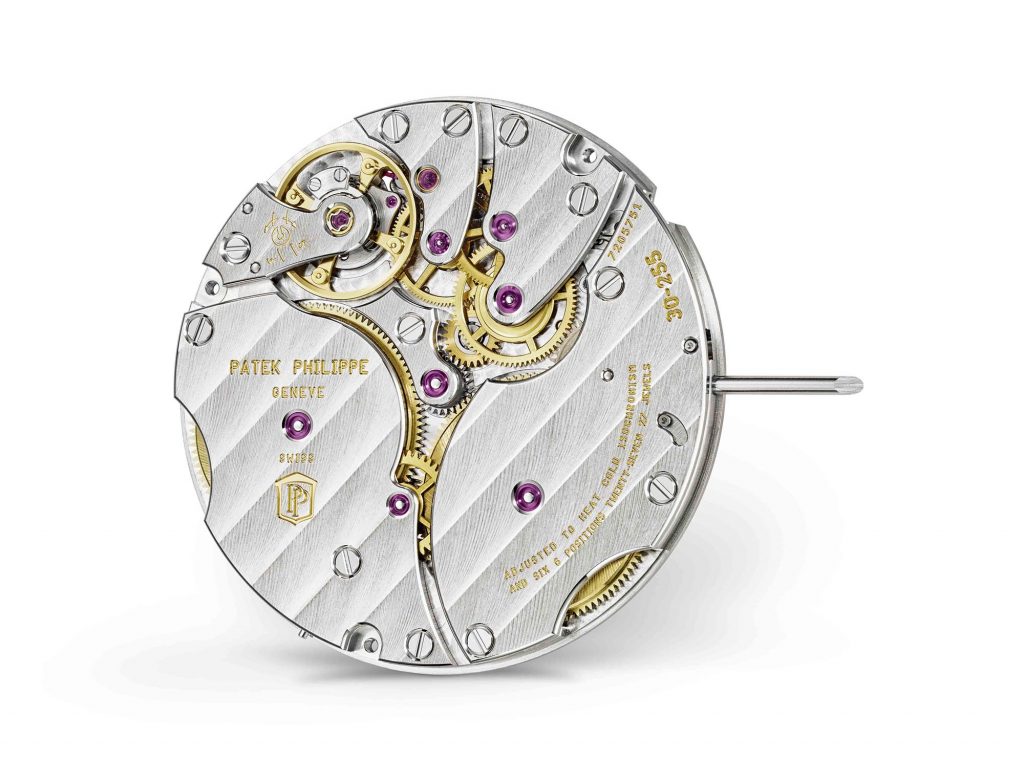
In the end, even though it was found that a single barrel was enough to provide the target 65 hour power reserve, it was determined that the aesthetics of a single barrel in the movement were not satisfactory, and so the decision was made to use double barrels in parallel instead, balancing out the elements of the calibre in a more attractive arrangement.
This is a well known tendency of the brand, to make things that not only have to function well, but also to adhere to the highest standards of aesthetic excellences. This technical decision might mean that there is a possibility of future variants of this movement coming with an even longer power reserve. For now however, what Patek Philippe has offered with this new watch is enough in their judgement, and if Patek Philippe says so, I’m fine with it.
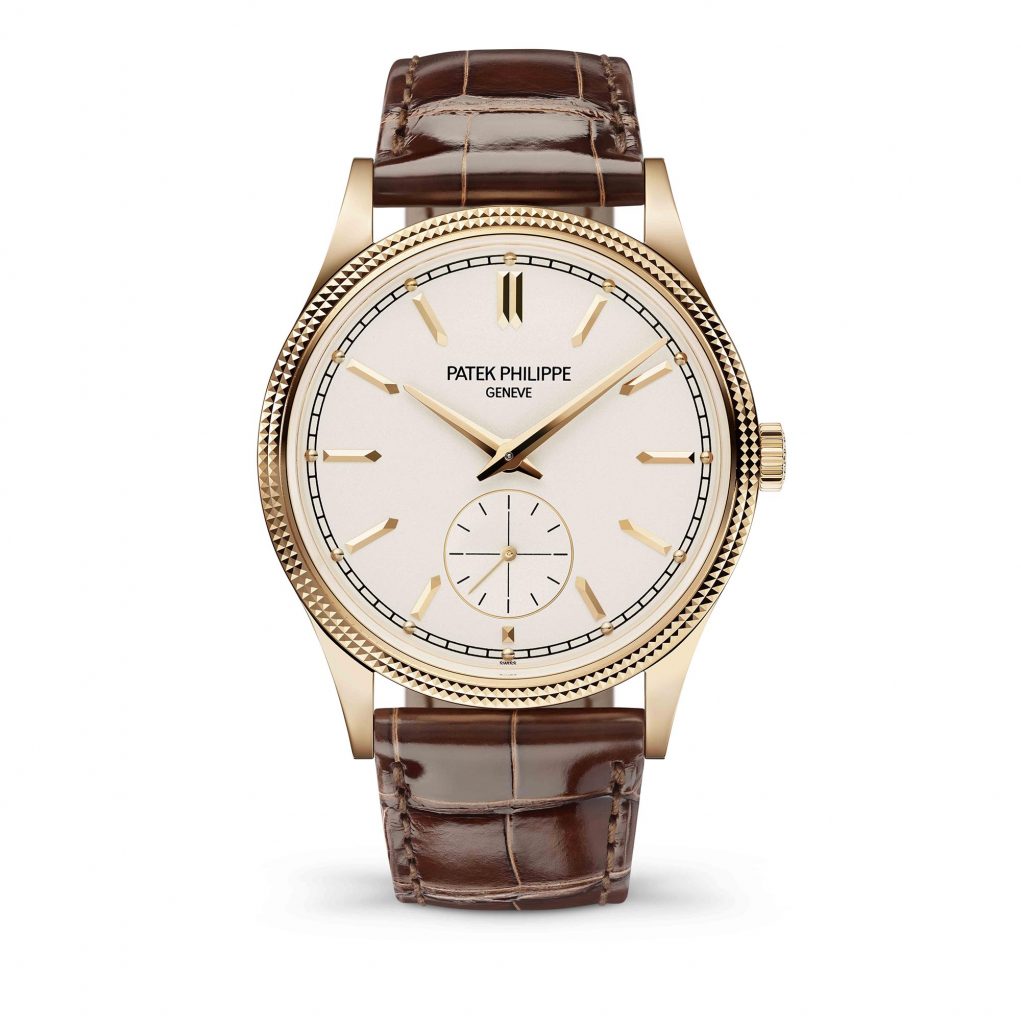
The Calatrava 6119 is an offering, that I can see collectors being drawn to emotionally, with the warm, fuzzy feelings of remembering the beloved Ref 3919, definitely making an appearance in the decision making process, which will be further helped along for the modern era, by a larger 39mm size and the functional improvements such as the 65 hour power reserve and hacking seconds.
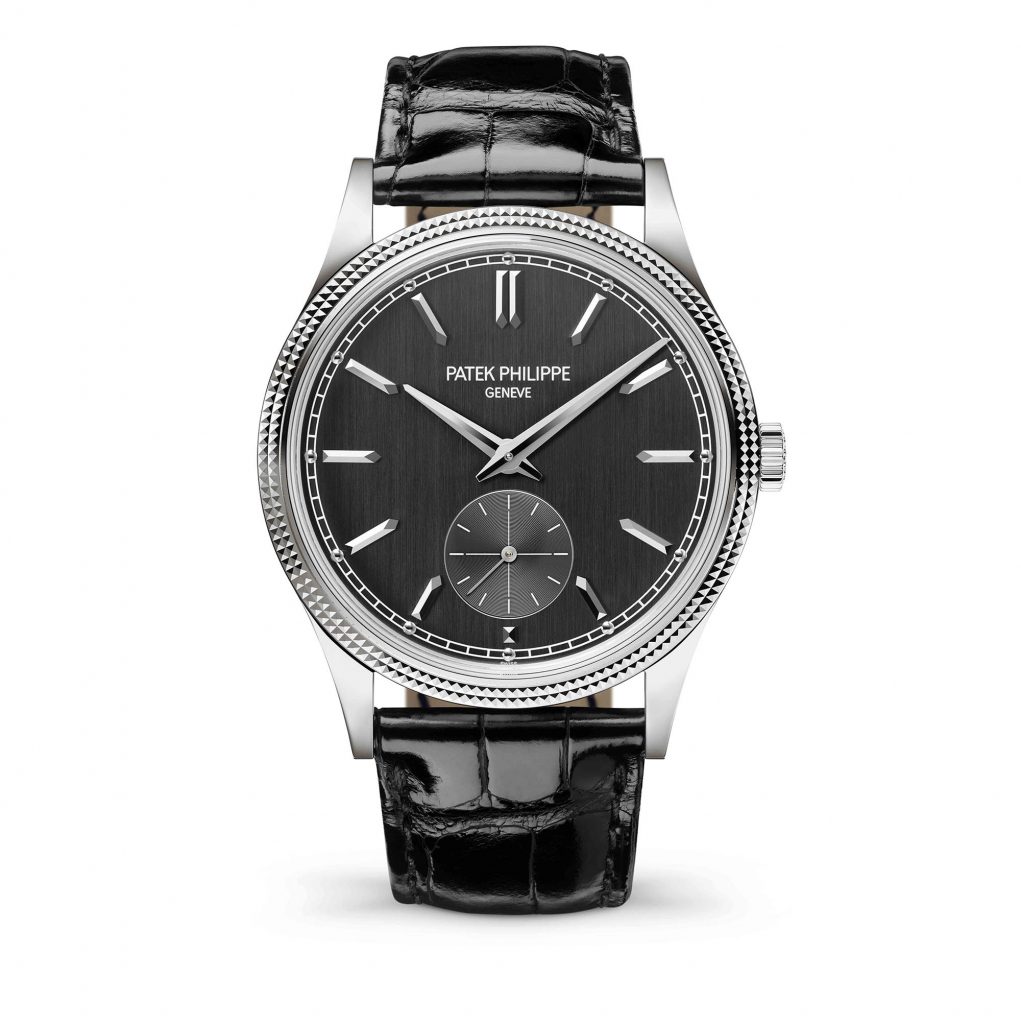
The new Calatrava Ref 6119 ia offered in two variations – the first, in rose gold with silvery grained dial and applied hour markers and hands in rose gold, and the second, in white gold with a charcoal grey dial with vertical satin finish, with snailed subsidiary seconds dial, as well as applied hour markers and hands in white gold.
Ref 5236P Perpetual Calendar with in-line indication.
The new Ref 5623P Perpetual Calendar might not look like much from the dial, but it has a unique feature that you would notice immediately if you were generally familiar with Perpetual Calendars generally, and not just those from Patek Philippe.

The in-line indication of the Day, Date and Month below the Patek Philippe Logo and the 12 o’clock marker is large, clear and logical enough, and its inspiration came from a particular pocket watch from the Patek Philippe museum in Geneva that was made for the American market, with an inline indication of the date in the order of the Month, Date and Day.
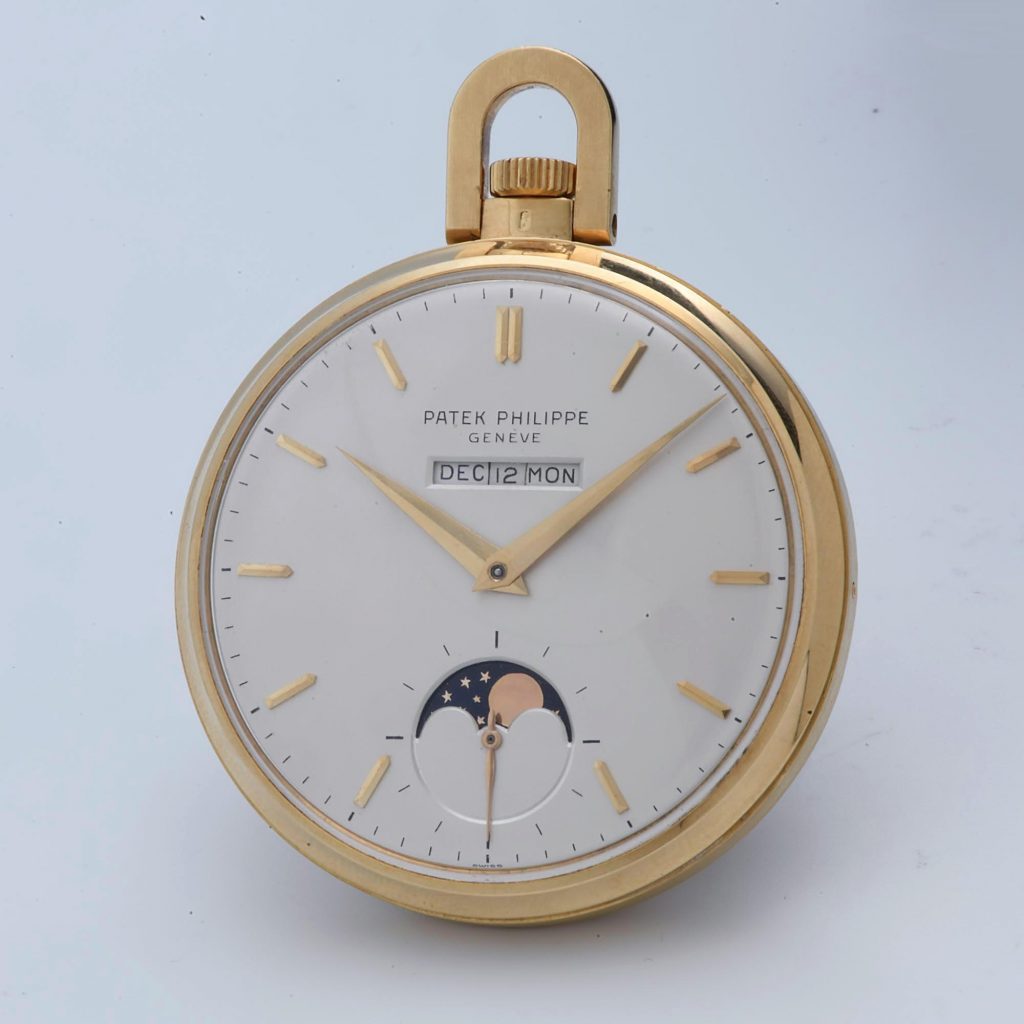
This was the watch that was the inspiration for the new Ref 5236P Perpetual Calendar, but upon studying the possibility of recreating it, a problem was quickly realized. Whereas the 46mm diameter of the original pocket watch was large enough to accommodate a single date wheel with all 31 dates on it, it would not work in a wrist-watch sized at 41.3mm.
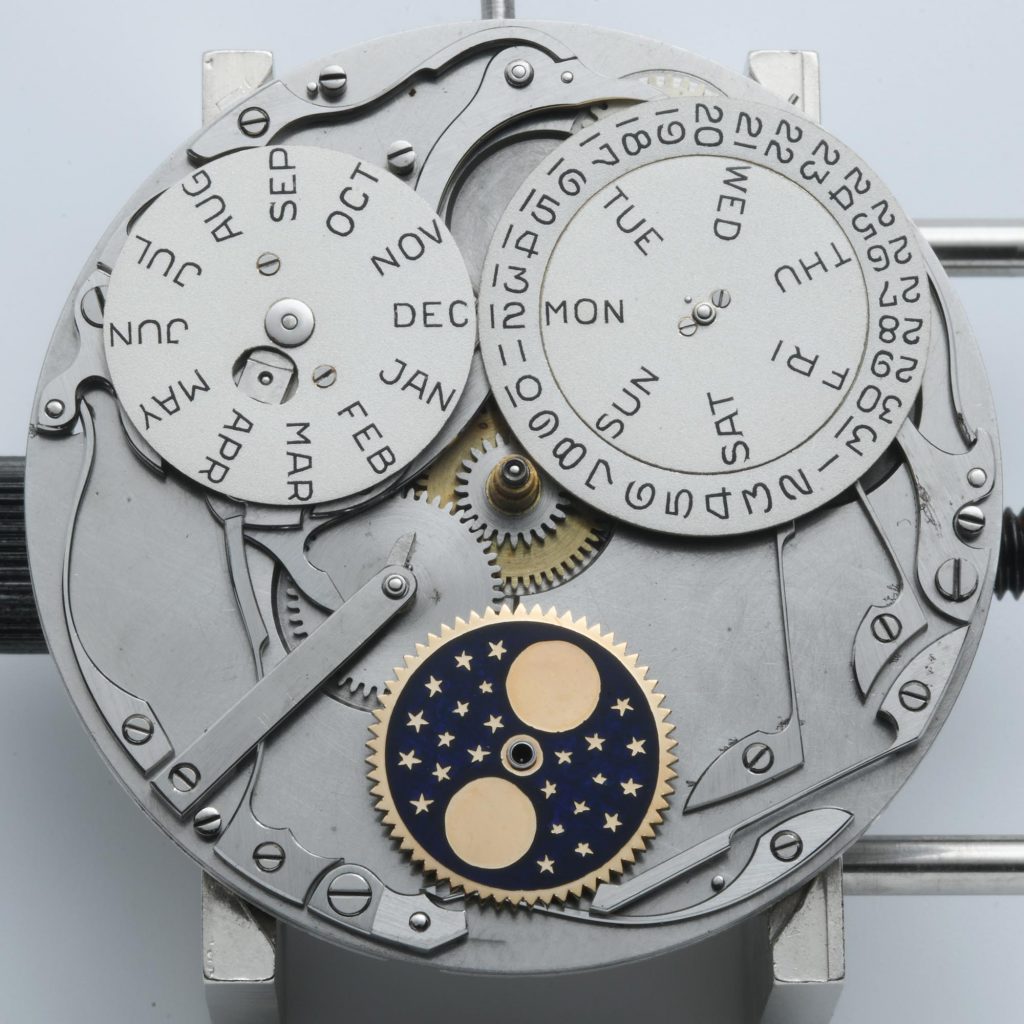
The solution then was first have the date formatted in the European style, with Day first, then Date and then Month, and then have each of the date numerals broken up into separate rings of Date numeral 10’s and Date numeral 1’s, so that it could all fit into a wristwatch case.
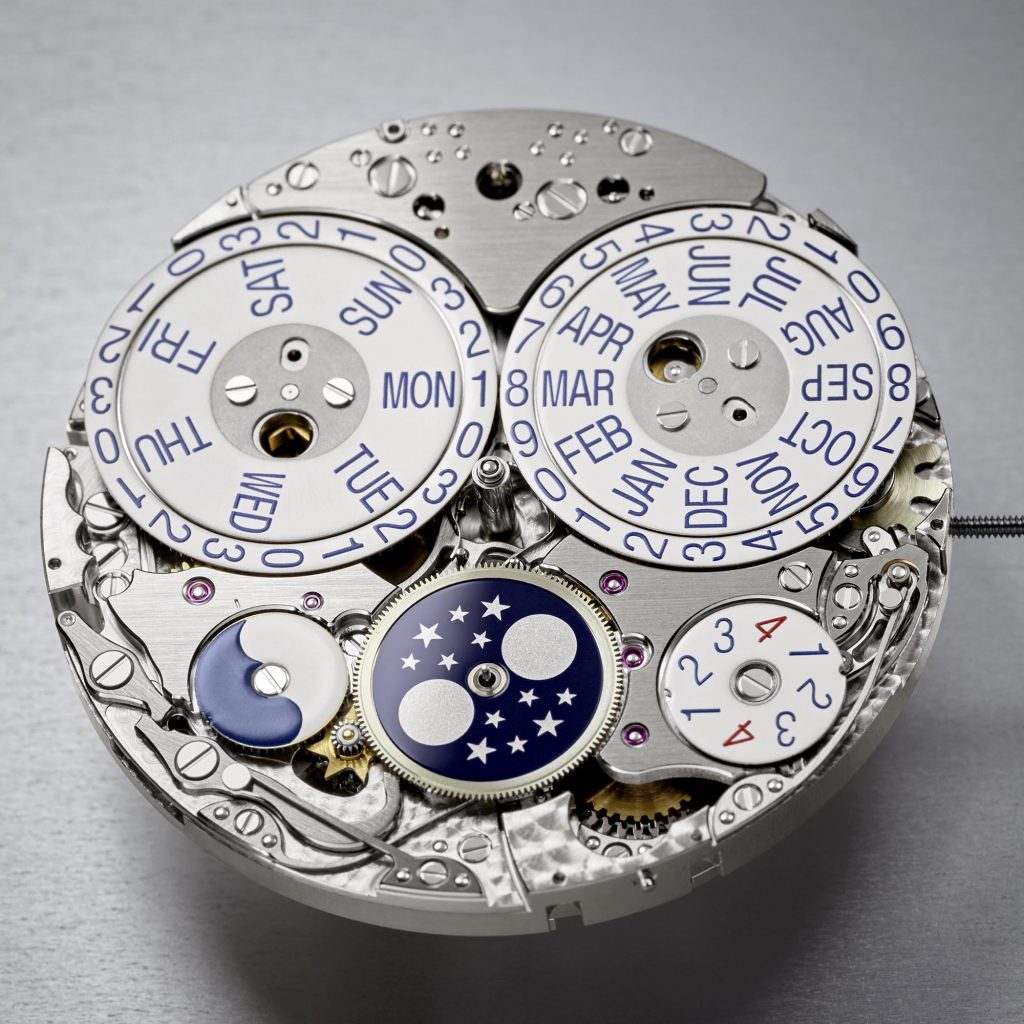
The under-dial works of the Ref 5623P Perpetual Calendar shows how this was done, and if you’re familiar with the layout of other perpetual calendars, you’ll know that this has not been done before elsewhere.
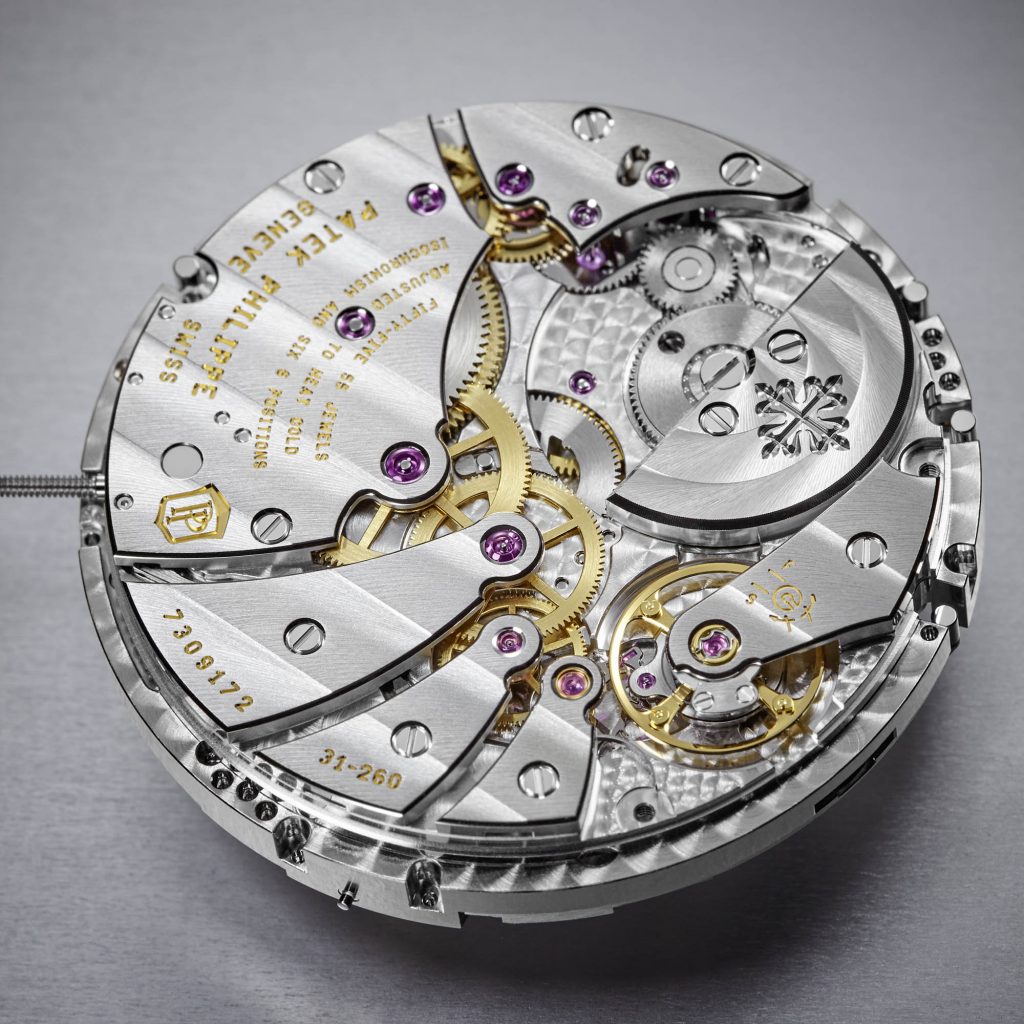
The indications are all on the same level or “coplanar” because the Day disc sits inside the Date 10’s numerals disc, and the Date 1’s numeral disc sits inside the Month disc, with each disc moving inside the other via a ceramic ball-bearing system. This layout saves space for all the required indications to be placed together and shown as a single line on the dial.
The customized module containing these innovations sits atop the calibre 31-260PSQL micro rotor movement. Also, the dial has a day/night indicator 8 o’clock, (which helps in the setting of the perpetual calendar), and a leap year indicator at the 4 o’clock position (with the “4” numeral in red to indicate the leap year).
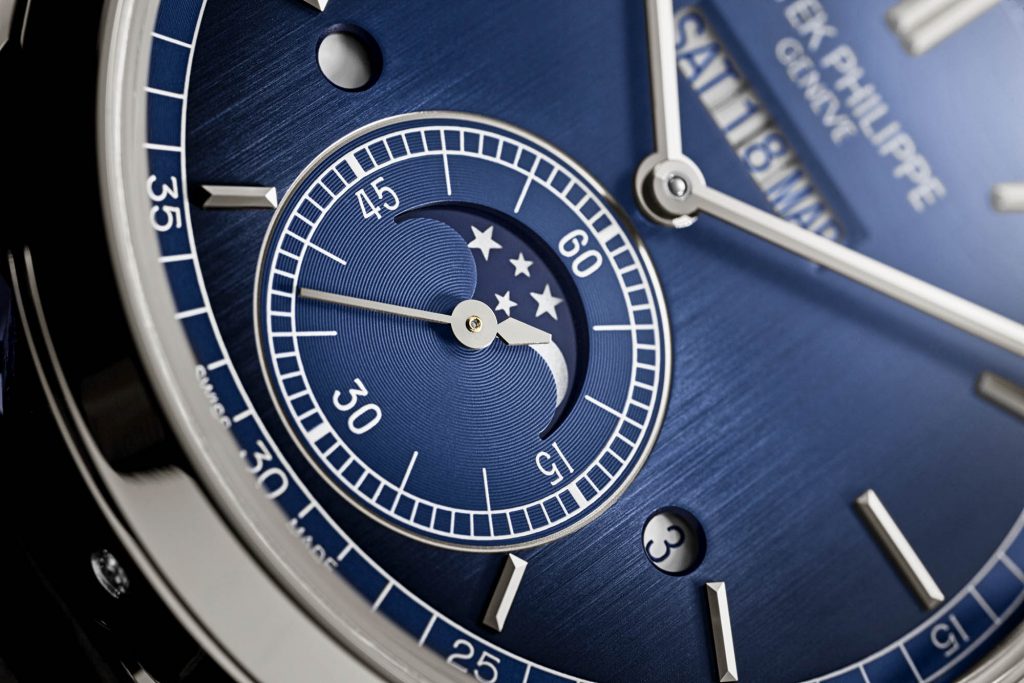
The new Ref 5236P-001 Perpetual Calendar comes offered in a 41.3mm wide and 11.07 mm thick platinum case (with the trademark single diamond between the lower lugs), and has a blue dial with a black gradation to the periphery which is adorned with a vertical satin finish, and then topped with applied hour markers and baton hands in white gold.

Suffice to say, it would take a longer article than this to explain the intricacies of how this system functions including the specific patented portions of it that show the innovation it contains. What is clear however is that this new watch shows that Patek Philippe have really been working hard to extend their already formidable legacy in the genre of Perpetual Calendars, of which they were the first to pioneer in a wristwatch in 1925.


